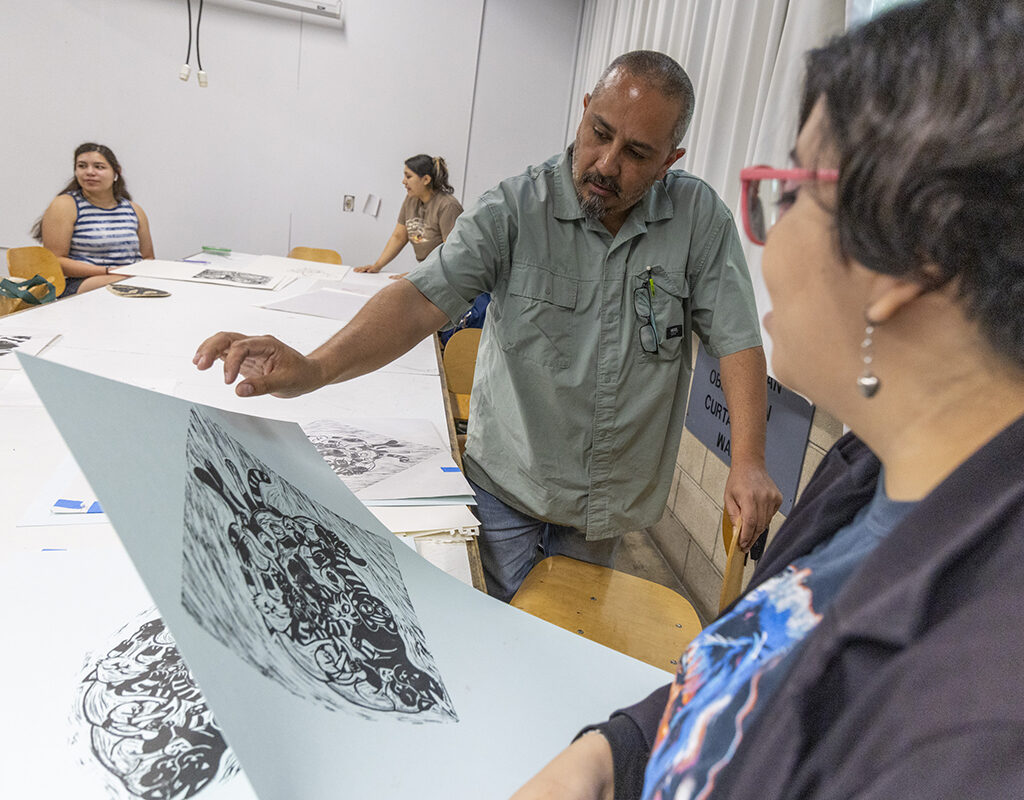
The large picture window at the front of the CSUN Art Galleries was a window into life as a working artist. CSUN students walking by could see members of the Kalli Arte Collective at work, using paper and scissors, glue and paint to tell stories about family and community and love.
Even better, students were welcome to stop in and engage with the artists at any time.
“It just came natural, to make sure that the connections we make with students are true connections,” said Alfonso Aceves, co-founder of Kalli Arte Collective. “It’s something we don’t take lightly, being able to interact with the students. And because we have our own children, that’s how I view all the students — they’re people I want to mentor, people I want to talk to. We’ve tried to reach out to as many students as we possibly can.”
Twenty years ago, Aceves and his wife, Adriana Carranza, founded the collective, which now includes their four children. Based in Boyle Heights, the versatile, self-taught artists specialize in digital and linoleum prints, collages and murals, creating images that speak to their lives and experiences. Their work incorporates hand-drawn art featuring indigenous symbols as well as faces and symbols inspired by their community.
This past spring, Kalli Arte Collective worked as CSUN’s first Virginia A. Orndorff Artist-in-Residence, a program that brings critically acclaimed artists to the Department of Art & Design for a 15-week residency.
The residency is the culmination of efforts and conversation among faculty, staff and long-time donors Virginia ’00 and Chris Orndorff to develop career pathways for student artists in the Department of Art & Design.
“How do you make the leap from the art classroom to the art world?” said Dan Hosken, dean of the Mike Curb College of Arts, Media, and Communication. “This residency started to percolate as a way to bring working artists in close and sustained contact with our students, to provide that launch pad into the profession.”
How to be fearless
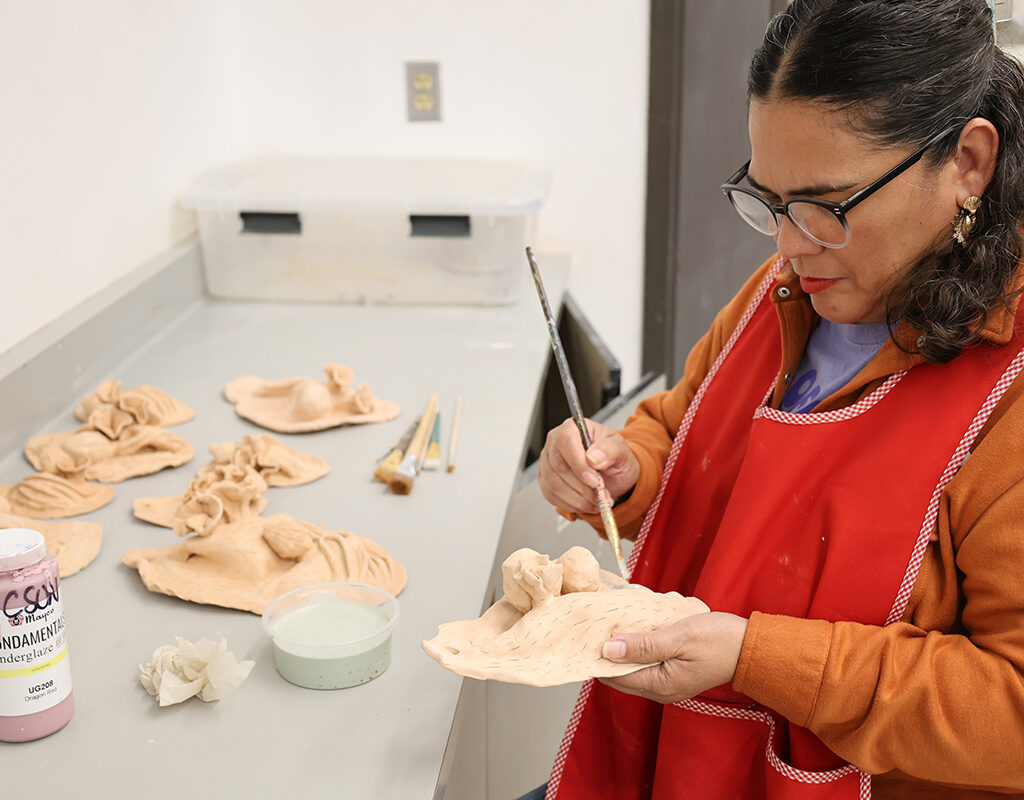
The idea to situate Carranza and Aceves in the highly visible space formerly occupied by the art galleries store came from Holly Jerger, CSUN Art Galleries director, who was on the residency selection committee. The artists immediately got to work on a collage featuring images from their community, which they hung in the front window to catch students’ attention and introduce themselves to campus.
The residency is tied into the curriculum of professor Mario Ontiveros’ Exhibition Design course. Students in the class worked with Kalli Arte to mount an exhibition — including planning and promotion. The students also photographed and created video documentation of the residency.
Carranza and Aceves reached students throughout the department. They conducted a project with an introductory printmaking class. They led workshops for various classes as well as one on Admitted Matadors Day. They took students on a field trip to their studio in Boyle Heights. They even used CSUN’s facilities to experiment with mediums that were new to them, such as ceramics. Four paid student assistants also had the opportunity to work alongside Carranza and Aceves.
“Hundreds [of] students are learning from Alfonso and Adriana,” said Samantha Fields, outgoing chair of the Department of Art & Design, who will continue to lead the residency program.
Graduate student José Galván Martínez said it was inspiring to watch Carranza and Aceves work long hours, producing great work and still finding time to meet students. The MFA candidate in visual arts found himself in the unusual position of teaching the accomplished artists about his craft, ceramics. But as he watched them work, he learned something — how to be fearless.
“Ceramics is one of those mediums where it’s physical, it’s process-based and a lot of the time, things can blow up, completely fall apart,” Galván Martínez said. “If something breaks, [Carranza and Aceves] will be completely fine, they just go make five more. It’s been great to have physical artists who are not afraid to let go, to just trust the process and be intuitive. That implements more into my practice, that fearlessness and that ability to just go with the medium and see what happens.”
On the horizon
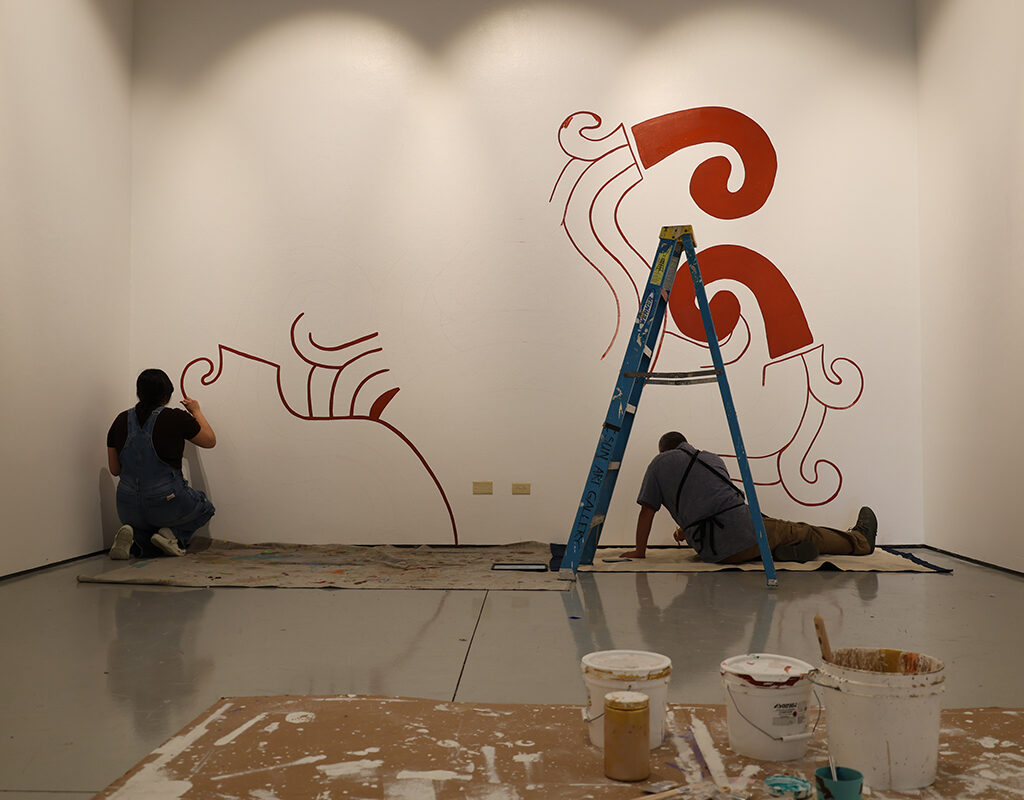
To create a variety of experiences that can reach all Art and Design students, the first three years of the program are mapped out to feature artists working in different mediums. In 2026, the selected artist will work in the animation/design/video/digital spaces, and in 2027 the chosen artist will specialize in sculpture and ceramics.
“One of the biggest key factors for Chris and me is that we wanted to make sure the students were able to learn from someone who’s already out there professionally, to have somebody to ask questions and to really be able to get that guidance,” said Virginia Orndorff, who served more than 15 years in the marketing department of a bank before launching a career as a photographic artist.
Working together
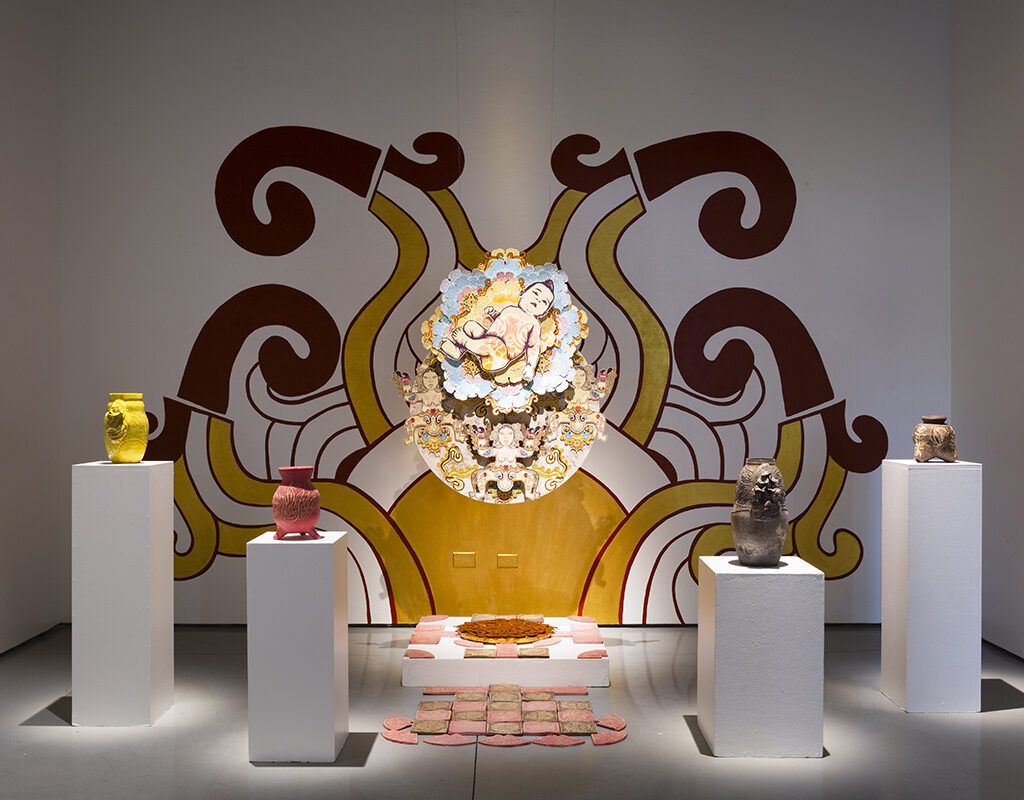
The residency’s culminating exhibition, “Our Sun Will Rise,” was inspired by the January birth of Aceves and Carranza’s granddaughter as well as their conversations with CSUN students. The centerpiece of the exhibit was a collage featuring their granddaughter, plus four ceramic vessels representing the child’s protectors.
The exhibit also featured 31 ceramic nopales — the flat paddles of a prickly pear cactus — one for each year the couple has been together. One wall highlighted portraits of seven students who were instrumental to the residency’s success. Taken together, the exhibit showed the new baby and CSUN students that they have a community to support them, Carranza said.
“This is what it looks like when you love each other, support each other, work together, have these ideas, bring them to reality,” she said. “You don’t have to feel like you’re alone. You can come together and create beautiful things for the world.”



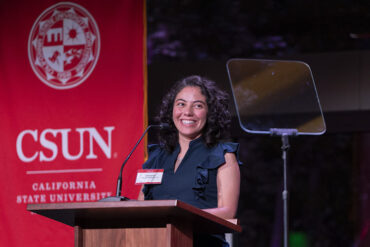
Comments are closed.